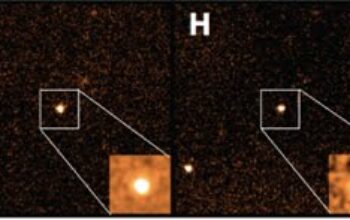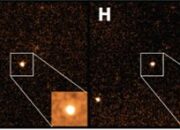The advent of the quantum computer marks a monumental breakthrough in our understanding of computation and information theory, pushing the boundaries of classical computing into realms previously governed by the laws of quantum mechanics. The question of who made the world’s first quantum computer is not merely an inquiry into historical facts; it opens up a dialog about the interdisciplinary confluence of physics, computer science, and engineering that propelled humanity towards this technological marvel.
In the early 1980s, physicist Richard Feynman initiated a conversation that would forever alter the landscape of computing. He posited that classical computers, constrained by classical physics, were inherently inadequate for simulating quantum systems. Feynman’s insights paved the way for the conceptual groundwork of quantum computing, but the realization of a functional quantum computer required both theoretical understanding and practical innovations.
Fast forward to 2001, a pivotal year where the University of California, Berkeley, alongside other institutions, introduced a rudimentary quantum device. This was the first instance of a quantum computer functioning on a minimal level, albeit not in the form we would recognize today. This apparatus was a simple quantum bit, or qubit, which could represent quantum states of 0 and 1 simultaneously, exploiting the principle of superposition. However, it was not until 2019 that the field began to witness systems capable of outperforming classical counterparts in specific computational tasks.
The journey to the first operational quantum computer would largely orbit the development of qubits. These qubits came in various forms—trapped ions, superconductive circuits, and photonic qubits. Each type had its merits and limitations, yet all were rooted in the same quantum principles that revolutionized our comprehension of information processing.
Among the prominent players in this unfolding narrative is IBM, whose Quantum Experience platform launched in 2016 allowed researchers and enthusiasts alike to run quantum algorithms on real quantum processors. In parallel, Google revealed its Sycamore processor in 2019, claiming quantum supremacy for their 53-qubit device, a watershed moment that intensified discussions around the true potential of quantum computation.
However, these advancements were not solely attributable to corporate giants. The academic community played a crucial role. Pioneers such as Lov Grover laid down algorithms that demonstrated quantum speedups, notably Grover’s Search Algorithm, which showcased how quantum computers could search unsorted databases quadratically faster than their classical equivalents. Moreover, Peter Shor’s groundbreaking algorithm for factoring large integers illustrated not only the computational prowess of quantum devices but also incited concerns regarding conventional encryption methods.
Yet, the realization of a functional quantum computer transcended mere theoretical advancements. Engineers and physicists grappled with the challenges of quantum decoherence, noise suppression, and error correction. Qubits, while deceptively simple in concept, demanded near absolute temperature environments and sophisticated error-correcting codes to attain reliability. The quest for a fault-tolerant quantum computer became a Sisyphean task, yet bore fruit in innovations such as the surface code, which structured qubit interactions to enhance resilience against errors.
Global institutions and consortiums began to emerge, unified in their ambition to harness quantum technologies. Governmental investments surged, with nations recognizing the strategic importance of quantum computing. Various national laboratories and universities began collaborating, cognitive architectures were refined, and funding for quantum research catapulted. The quantum computing arms race ensued, revealing a selective landscape of ingenuity, investment, and foresight.
Today, the title of the “first quantum computer” is layered with nuance. In a way, it could refer to the earliest theoretical constructs, but, more pragmatically, it aligns with those entities successfully demonstrating quantum advantage. Such systems leverage quantum principles effectively, employing entanglement and superposition to explore computational solutions far beyond classical approximations.
The implications of quantum computers are profound. Financial sectors anticipate a revolution in risk assessment algorithms, pharmaceuticals predict accelerated drug discovery processes, and cryptographers recognize an imminent need to rethink data security protocols. What sets quantum computing apart from classical methods is its unique ability to tackle complex problems that defy traditional computational measures.
Yet, the realm of quantum computing is not enclosed within the confines of practical applications; it envelops philosophical inquiries as well. As we stand on the precipice of this transformational era, questions arise about the very nature of information, computation, and existence itself. Can quantum entanglement, a phenomenon eschewing classical intuitions, redefine our understanding of locality and causality? Might the advent of quantum algorithms alter the fabric of what humans conceive as solvable problems?
Consequently, identifying the creator of the world’s first quantum computer serves as a salient reminder of the collaborative spirit that pervaded this journey. It encapsulates myriad contributions from an array of disciplines, challenging us to adapt a holistic perspective on technological progress. As society embarks on this exciting expedition into the quantum realm, one must not merely applaud the achievements but also remain cognizant of the moral and ethical considerations that arise alongside groundbreaking advancements.
In conclusion, the journey to the world’s first quantum computer involved a tapestry of contributions from luminaries across various fields, united by a singular vision of transcending the limitations of classical computing. The quest is far from over, and as we navigate this odyssey, one cannot help but ponder: what new vistas of understanding lie just beyond the horizon of quantum exploration?










